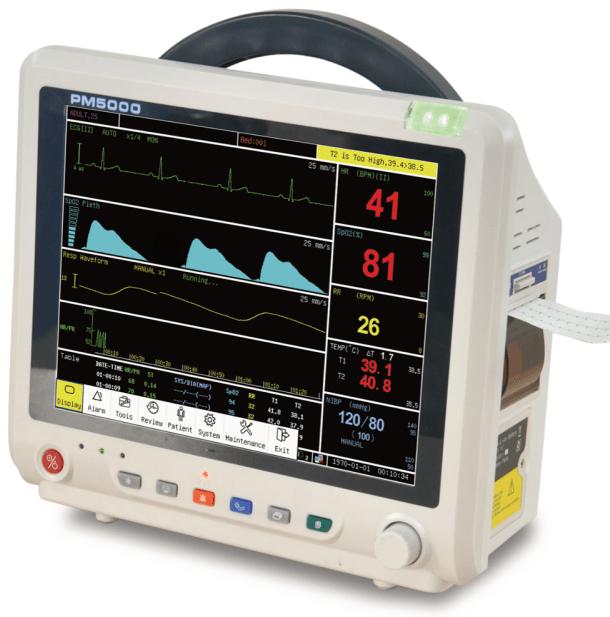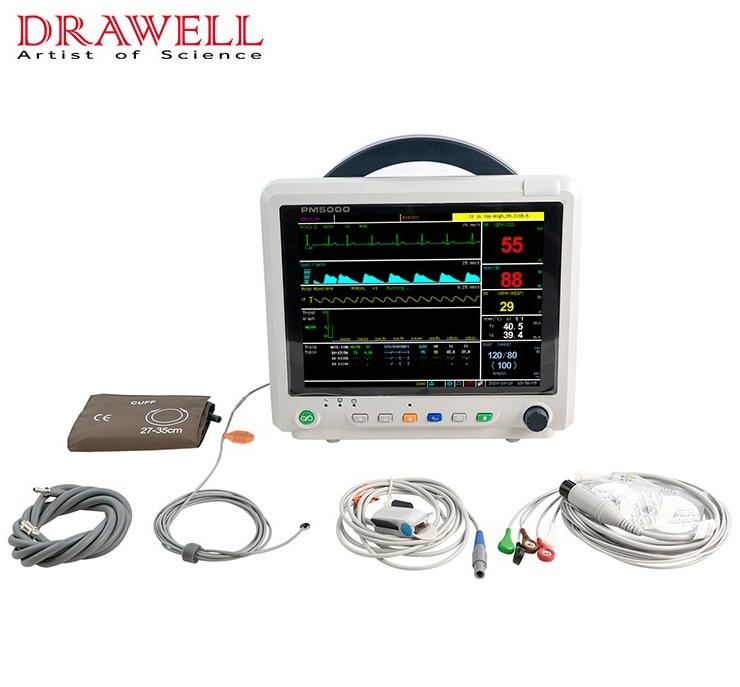
A patient monitor, as we all know, is a medical instrument that is often employed in disease treatment. During use, it continually monitors the patient's physiological parameters, detects shifting trends, and can alarm and remind abnormal monitoring signals to alert clinicians to crucial conditions for emergency treatment and therapy.
It is critical to comprehend the monitor, whether it is a patient or a family member, and being able to understand the monitor will also make the patient's companion feel more at ease and secure.
Patient monitors are tools that are used to closely monitor and assess the condition. They are classified into two types: desktop monitors and telemetry monitors.

What is a patient monitor?
The patient can walk while wearing a telemetry monitor, which is mostly used for patients who need to monitor their heart rate. It may continuously record the patient's heartbeat rhythm. If an aberrant heartbeat is found, it can be evaluated retrospectively.
Desktop monitors frequently record heart rate, blood pressure, and breathing rate, as well as identify hypoxia by measuring finger oxygenation.
The main application scenarios of the patient monitor
There are several monitor application scenarios, and monitor devices are required both within and outside the hospital.
Different sorts of monitoring products will be employed depending on the clinical demands. Monitoring goods are used in the following scenarios:
1. Emergency, outpatient, general ward, intensive care unit, operating room, in-hospital transfer, and so on.
2. Outside of the hospital, for example, at home.
What are the values on the patient monitor?
The ECG on the ECG monitor is an electrocardiogram in general, and the right side is a column of values from top to bottom. The heart rate is shown by the green value. Non-invasive blood pressure (NIBP) is also known as blood pressure. SpO2 is blood oxygen saturation. RR is the respiratory rate. TEMP is body temperature.
The following is the number reference:
Heart rate: A normal person's heart rate ranges between 60 and 90 beats per minute.
Blood pressure: Blood pressure is often checked one to two hours following surgery. The two red readings on the left and right indicate systolic and diastolic blood pressure, respectively. The normal systolic blood pressure range is 90-140mmHg, and the normal diastolic blood pressure range is 60-90mmHg.
Blood oxygen saturation: In order to carry oxygen, hemoglobin in human blood must combine with oxygen. Normal bodily functions necessitate the consumption of oxygen. The capacity of oxyhemoglobin in human blood, which is typically between 95% and 99%, is represented by blood oxygen saturation.
Non-invasive blood pressure: Non-invasive blood pressure monitoring uses the Korotkoff sound detection method, and the brachial artery is occluded with an inflatable cuff. A variety of distinct tones will appear during the pressure drop blocking operation. Systolic and diastolic blood pressure can be calculated based on tone and time.
A microphone is utilized as a sensor during monitoring. When the cuff pressure exceeds the systolic pressure, the blood artery is squeezed, the blood under the cuff stops flowing, and the microphone receives no signal.
When the microphone detects the first Korotkoff sound, the cuff pressure is systolic. The microphone then measures the Korotkoff sound again, this time from the attenuated stage to the quiet stage, and the matching cuff pressure is the diastolic pressure.
Body temperature: The outcome of the body's metabolism, body temperature is one of the conditions for the body to carry out regular functional activities. The temperature inside the body is referred to as "core temperature" and reflects the condition of the head or torso.

When can I stop using the patient monitor?
The desktop monitor in the hospital can restrict the patient's movement and cause discomfort. As a result, many patients expect to be released from monitoring as soon as their health improves slightly. Is this correct? When will I be able to remove the ECG monitor?
The improvement in the sickness that you observe is merely an improvement in the symptoms or the surface of the patient monitor. The natural history of the condition, the severity of the underlying ailment, and the findings of laboratory tests will all be considered by a physician when determining disease improvement. The monitor can only be turned off with the doctor's permission after all examinations have been finished.